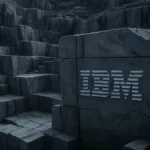Imagine driving at night in a rainstorm – but still being able to see clearly, with the raindrops almost invisible.

That’s the promise of a smart headlight system invented by researchers at Carnegie Mellon University, which actually redirects light to shine between raindrops or snowflakes to avoid glare.
“If you’re driving in a thunderstorm, the smart headlights will make it seem like it’s a drizzle,” says Srinivasa Narasimhan, associate professor of robotics.
The system uses a camera to track the motion of raindrops and snowflakes and then applies a computer algorithm to predict just where they’ll be a few milliseconds later. The system then deactivates any light beams that would illuminate the particles.
“A human eye will not be able to see that flicker of the headlights,” says Narasimhan. “And because the precipitation particles aren’t being illuminated, the driver won’t see the rain or snow either.”
In lab tests, the system could detect raindrops, predict their movement and adjust a light projector accordingly in 13 milliseconds. At low speeds, says the team, it could eliminate 70 to 80 percent of visible rain during a heavy storm, while losing only five or six percent of the light from the headlamp.
To operate at highway speeds and work effectively in snow and hail, the system’s response will need to be reduced to just a few milliseconds – but the team’s confident this is perfectly possible.
For instance, while the prototype couples a camera with an off-the-shelf DLP projector, LEDs could give a big improvement. If combined with image sensors on a single chip, they’d enable high-speed operation at low cost.
The team’s now engineering a smaller version of the smart headlight that they hope to test on the road.
“One good thing is that the system will not fail in a catastrophic way,” says Narasimhan. “If it fails, it is just a normal headlight.”






